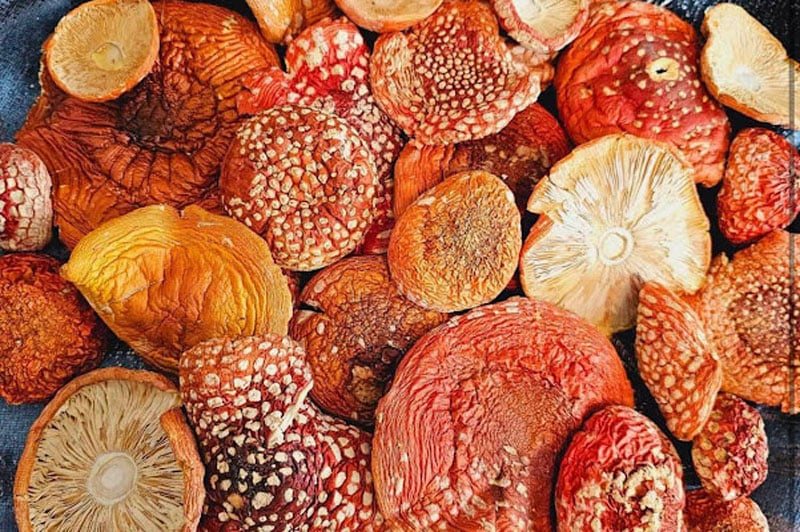Have you ever wondered what goes into the making of those tantalizing Amanita Muscaria gummies you cherish and how your favorite brand manages to maintain such consistency in taste and quality?
As a discerning consumer, you’ve probably read up on product labels and descriptions, often coming across terms like “third-party testing” and “lab-verified.” For sure, you’ve been making it a point to buy only from brands that claim to have undergone rigorous Amanita Muscaria testing and certificates by independent testing facilities.
But is that the end of it? Do you just take their word for it and accept those glossy seals of approval without a second thought? And how can you be sure that the results they boast about are as genuine and accurate as they claim.
With Amanita Muscaria products rising in popularity, it’s more important than ever to differentiate between genuine quality and clever marketing.
So, How Accurate Are Amanita Muscaria Testing Lab Results?
At the heart of it all are state-of-the-art testing methods that labs use to scrutinize Amanita Muscaria products down to their tiniest constituents. Techniques like gas chromatography and liquid chromatography are employed.
Gas chromatography, often abbreviated as GC, involves vaporizing the sample. By doing so, it separates compounds based on how they interact with the material inside a column, making it easier to identify and quantify each one.
On the other hand, liquid chromatography, commonly known as LC, employs solvents to pass the sample through another type of column. This method is particularly adept at isolating compounds that might not vaporize easily.
Now, as powerful as these techniques are, they’re not infallible. Gas chromatography, for instance, excels at identifying volatile compounds. However, it might not be as adept at catching non-volatile ones. On the flip side, liquid chromatography can capture a broader range of compounds, but it might need more time.
But here’s where the rubber meets the road: How do these methods fare in real-world scenarios? While most established labs aim for precision, discrepancies can and do happen. The accuracy of lab results isn’t just about the equipment or the method; it’s a culmination of various factors:
1. Quality of the Sample
The mushroom’s age, how it’s dried, and its storage conditions can significantly influence test outcomes. For instance, a mushroom that’s been improperly stored might have degraded compounds, leading to skewed results.
2. Testing Equipment and Its Calibration
The tech side of things matters a lot. While labs generally use high-end equipment, routine maintenance and calibration are crucial.
An uncalibrated machine might give results that are consistent (the same wrong answer every time) but not accurate (not the right answer).
3. External Contaminants
The environment in which tests are conducted matters. Laboratories must maintain impeccable cleanliness, as even minor oversights can lead to significant discrepancies.
Temperature, for instance, can significantly affect the outcome of the results. At elevated temperatures, certain compounds within the Amanita Muscaria might degrade, skewing the results.
Similarly, moisture is a silent disruptor. The presence of even trace amounts can interact with the sample’s compounds, causing them to dissolve or react.
Beyond these, airborne contaminants, be it dust or minuscule particles, risk contaminating the sample. And it’s not just about the environment; the manner in which a sample is handled and stored before testing can influence its chemical makeup. Any contact with foreign substances or suboptimal storage conditions could introduce variables that compromise the accuracy of test outcomes.
How to Tell if Lab Results Are Accurate
When consumers see these lab test results on their beloved Amanita Muscaria products, the immediate reaction is trust. But, as we’ve seen, even the most advanced techniques have their nuances and potential pitfalls. Therefore, the question isn’t just about whether testing is done but how accurately and reliably it’s executed.
To ensure you’re truly getting what’s promised on the label, it’s invaluable to have an understanding of the Certificate of Analysis (CoA). This document, issued by the testing lab, provides a detailed breakdown of the product’s composition.
Here’s what you need to look out for:
A Thorough COA: A genuine Certificate of Analysis won’t just show the end results; it should detail the methods used, any potential limitations, and the conditions under which the tests were conducted. An in-depth COA provides transparency, allowing you to see beyond mere numbers.
Batch Numbers Matching: The batch number on the product should correspond with the one on the CoA. This ensures that the product you hold in your hand is the exact one that was tested and not just a representation of a different batch.
Accredited Testing Facility: Trustworthy results come from trustworthy labs. Look for accreditations or certifications that the lab holds. Accrediting bodies ensure that labs maintain specific standards, both in testing methods and in reporting results
Perfection = Red Flag: Nature is rarely perfect. If a lab report shows 100% purity without any trace elements or minor compounds, be skeptical. Real-world products, especially those derived from natural sources like Amanita Muscaria, will often have slight variations from batch to batch.
At a time when Amanita Muscaria’s popularity is soaring and an increasing number of products flood the market amidst a regulatory landscape yet to catch up, ensuring that what we consume is both safe and genuine is paramount. While terms like “third-party testing” and “lab-verified” are undoubtedly reassuring, it’s essential to dig deeper into the world of Amanita testing and certification. We must find out whether what we see on the label is truly what we get inside the package.





